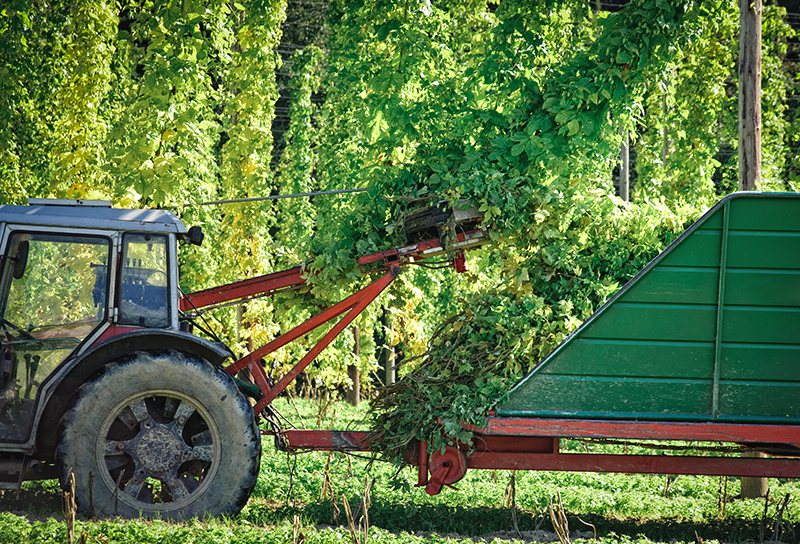 Hops are the flowers from the plant known as humulus lupulus. The hops plant sends up vines (technically “bines”) in the spring, which may climb as high as 20 feet or more. Since only the flowers are used in the brewing process, only the female hops plants have commercial value for brewers.
Hops are the flowers from the plant known as humulus lupulus. The hops plant sends up vines (technically “bines”) in the spring, which may climb as high as 20 feet or more. Since only the flowers are used in the brewing process, only the female hops plants have commercial value for brewers.
Where Do Brewing Hops Grow
Brewing hops grow best between the latitudes of about 35 and 55 degrees. This translates to a strip ranging across roughly the northern two-thirds of the US and most of continental Europe. If you live in this zone, you may be able to grow hops yourself.
Many traditional beer styles are characterized by the variety of hops that grow in a given region. For example, American ales, such as American IPAs, typically exhibit characteristics of hops grown in the Pacific Northwest – notes of citrus and pine are common. The majority of brewing hops grown in the US come from Washington, Oregon, and Idaho. Examples of American hops include Cascade, Centennial, Columbus, and Willamette.
There are a number of hop varieties specific to continental Europe. The noble hop varieties (Hallertau, Tettnang, Saaz, Spalt) all come from Germany and the Czech Republic, and are most often found in traditional European styles like German ales, German lagers, and Czech lagers. Many Belgian beers feature these same hops, as well as Styrian Goldings from the region of the former Yugoslavia.
The UK is another popular hop growing region. Fuggles, East Kent Golding, and Bramling Cross are natural choices if brewing English bitters, porters, barleywines, or stouts.
In recent years, brewing hop production has increased in the southern hemisphere. Hops grown in places you might not expect have started to hit the market: Chile, Argentina, New Zealand. Sierra Nevada pays tribute to some of these distant hop growers with their Southern Hemisphere Harvest IPA.
From the Growing Fields to Your Home Brewery
At the end of the growing season, hops are harvested by machine or by hand, then processed either into pellets or packed in whole cone form. They’re usually pressed into bales for easy shipping and storage.
At some point in this process, the hops may go to a broker who effectively buys the hops from farmers and then distributes them to the various buyers: breweries, homebrew shops, and other hop suppliers.
Throughout this process, hops must be stored cold in order to preserve their flavor and bittering characteristics. This makes sure that by the time the hops hit your brew kettle, they’re just as fresh as they were when they left the field!
Have you ever grown your own hops? What are some of your favorite hop varieties?
—–
David Ackley is a writer, brewer, and craft beer marketing consultant. He holds a General Certificate in Brewing from the Institute of Brewing and Distilling and is founder of the Local Beer Blog.

I have been grow Cascade Hops for 25 years. I started with a few roots and though I moved once and they were replanted from the same roots they are still producing every year.